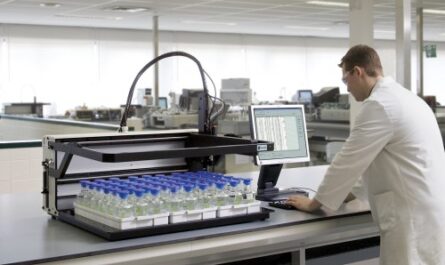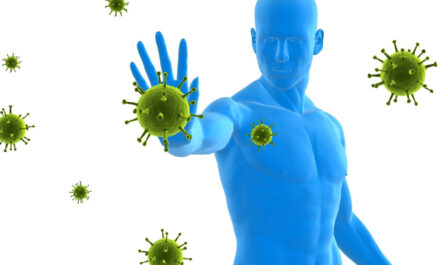
Introduction to Remote Patient Monitoring
Remote patient monitoring (RPM) devices allow healthcare providers to monitor patients and collect biometric data outside of conventional clinical settings, such as hospitals and doctor’s offices. By using medical devices and sensors, RPM solutions can track patients’ vital signs and other health data in real-time. This continuous monitoring capability enables earlier detection of potential health issues before they escalate into emergencies.
Some common types of medical data that can be collected remotely include blood pressure, heart rate, blood glucose levels, blood oxygen levels, lung function, and weight. Data is sent via the Internet or wireless connections to healthcare providers for review. This enables providers to proactively intervene if measurements indicate a patient’s condition may be worsening. RPM thus supports the transition to more preventative and proactive models of care.
How RPM Devices Work
Typical Remote Patient Monitoring setups involve patients using various connected health devices and sensors at home to track aspects of their health and wellness. Data is transmitted via a wireless connection, such as Bluetooth, to a central monitoring system. Many RPM devices are equipped with their own modems, facilitating two-way communication between the device, patient, and clinical teams.
Some RPM solutions incorporate multiple sensor modules integrated into a single device or system. For example, a compact monitoring unit may contain modules to measure vital signs like blood pressure, pulse oximetry, EKG, respiration rate, weight, and temperature. More advanced units can also analyze data using clinical algorithms to detect potential issues. Data captured by these devices is securely transmitted to a cloud-based portal accessible to clinicians for review and intervention if needed.
Patients primarily interface with RPM technology through purpose-built medical devices and monitoring systems. Devices are often small, lightweight, and easy for patients to use independently at home as part of their daily health routine. Setup usually takes less than 5 minutes with most systems designed for intuitive usability. Captured data is automatically uploaded to cloud-based dashboards and analytics platforms via wireless connectivity.
Role of RPM in Chronic Disease Management
RPM plays a vital role in managing chronic conditions that require long-term monitoring and intervention, such as congestive heart failure, diabetes, COPD, and hypertension. These diseases often involve lifestyle and behavioral modifications through medication adherence and dietary changes.
For heart failure patients, regular measurement of weight, blood pressure and other vital signs helps clinicians identify early signs of fluid retention or other issues leading to decompensation. Alert thresholds can be established so providers are promptly notified about concerning deviations from normal ranges. This allows timely medical review to prevent costly hospitalizations.
For diabetes, continuous glucose monitoring enabled by RPM technologies empowers patients and care teams with actionable insight day-to-day and week-to-week. Insulin dosage and regimen adjustments can be made remotely based on trends observed in glucose readings and other parameters. This level of monitoring was previously not feasible except during clinic or facility-based care.
Benefits of Remote Patient Monitoring
RPM offers an array of clinical, financial and user experience benefits compared to traditional office or facility-based care models:
– Increased Access & Convenience – Patients can access care from home, reducing burden of travel and time away from work/family for routine monitoring.
– Early Detection – Continuous monitoring enables health changes to be caught sooner through daily transparency of key metrics. This facilitates preventive care.
– Cost Savings – Studies show RPM can reduce hospital admissions and ER visits by catching issues earlier. This lowers overall healthcare expenditures significantly.
– Engagement – Leveraging consumer technology increases adoption and engagement as patients interface with clinical workflows through familiar devices.
– Data Insights – Longitudinal health data provides a richer view of patient wellness over time, revealing trends that inform personalized care planning.
– Resource Optimization – Clinicians can focus on complex cases while lower-acuity patients are monitored remotely, boosting overall system capacity.
Privacy and Security Considerations
As with any digital health technology, data privacy and cybersecurity are paramount with RPM solutions. Systems must incorporate robust access controls, network security protocols, and encryption. Patient consent policies help ensure data is only accessed and shared with authorized clinical teams on a need-to-know basis.
Anonymization techniques and secure data storage are also important, considering the sensitivity of health information involved. Regulatory standards like HIPAA in the US establish security and privacy compliance requirements for RPM developers and providers. Adherence to best practices around user authentication, vulnerability management, and auditing is critical to maintaining patient trust in these technologies.
Future Potential of Remote Patient Monitoring Devices
RPM represents a shift toward a more patient-centric model of preventive and chronic care management. As the technology advances, its role in clinical care pathways is expected to grow substantially. Integration with electronic health records will deepen the utility of RPM data within broader care contexts.
Novel applications on the horizon include expanded in-home diagnostic capabilities through modular sensor extensions. Continuous monitoring may one day track additional biometrics like blood oxygen saturation, EKG, lung sound recordings, and even urine and stool analyses to provide deeper physiological insights.
Combining RPM with emerging fields like wearables, ambient sensors, artificial intelligence and predictive analytics opens possibilities in proactive population health management as well. Aggregated data streams from connected patients offer a new lens on emerging trends, at-risk cohorts and overall community wellness to improve prevention and outcomes community-wide. Remote patient monitoring is poised to meaningfully transform healthcare delivery if its full transformative potential is realized.
In summary, remote patient monitoring devices enables virtual care delivery through connected medical devices and digital health tools. By facilitating continuous monitoring outside clinical facilities, RPM supports preventive chronic disease management and early detection of health changes. Its utilization is expected to rise substantially given demonstrated clinical and cost benefits compared to traditional care models. Advancing technology applications should further expand the role of RPM in value-based care frameworks of the future.
*Note:
- Source: Coherent Market Insights, Public sources, Desk research
- We have leveraged AI tools to mine information and compile it



